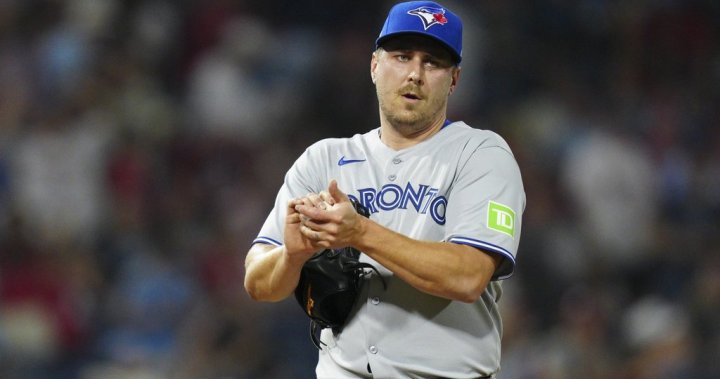In a move that speaks volumes about the current state of the Toronto Blue Jays organization, the team has officially parted ways with reliever Erik Swanson after he cleared waivers on Thursday. The decision marks another chapter in what has become a disappointing saga for both the pitcher and a franchise struggling to find its footing this season.
Swanson, who arrived in Toronto with considerable promise as part of the Teoscar Hernández trade with Seattle in November 2022, has experienced a dramatic fall from grace. After posting a respectable 2.97 ERA across 66 appearances last season, the right-hander’s performance collapsed in 2024, with his ERA ballooning to a troubling 7.45 over 29 innings before the team designated him for assignment.
The timing of this release is particularly telling. In the midst of a season where the Blue Jays have failed to meet expectations, management appears to be sending a clear message about accountability and performance standards. As I’ve noted in previous analyses for CO24 Opinions, professional sports organizations often use these mid-season personnel changes as symbolic gestures toward frustrated fan bases.
What makes Swanson’s departure especially significant is what Toronto surrendered to acquire him. Teoscar Hernández, now thriving with the Los Angeles Dodgers after a brief stint in Seattle, represents the type of offensive production the Blue Jays have desperately lacked this season. The trade, which also brought in outfielder Gabriel Moreno, now appears increasingly one-sided, raising questions about the front office’s talent evaluation processes.
The statistical collapse is striking. Swanson’s strikeout rate dropped from 11.4 per nine innings in 2023 to just 7.1 this season. Meanwhile, his walk rate nearly doubled, and opponents’ batting average against him jumped from .204 to a concerning .281. These numbers tell the story of a pitcher who lost not just velocity, but command and confidence—the death knell for any bullpen arm at the major league level.
This release also reflects broader cultural shifts in baseball operations, something we’ve explored extensively at CO24 Culture. The modern game’s analytical approach means shorter leashes for struggling players, particularly relievers whose sample sizes can be evaluated more quickly. The days of allowing players to work through extended slumps without consequences are increasingly rare in a sport driven by data and immediate results.
For Swanson personally, this represents a significant career crossroads. At 30 years old, he’s experienced both the highs of being a valued bullpen piece on a contender and the lows of being cut outright. The question now becomes whether another organization will see his 2023 performance as the true indicator of his ability, or if his 2024 struggles have permanently diminished his market value.
From Toronto’s perspective, this move creates opportunities for younger arms in the system while acknowledging the financial realities of maintaining a struggling player earning $2.25 million this season. The Blue Jays will remain responsible for his salary minus the prorated league minimum if he signs elsewhere.
As baseball continues its relentless forward march, Swanson’s release serves as yet another reminder of how quickly fortunes can change in professional sports. For players, coaches, and front offices alike, the game remains as much about adaptation and resilience as it does about raw talent.
The Blue Jays, meanwhile, must now face difficult questions about their competitive window and whether more significant changes might be necessary as they look toward rebuilding a contender in the ultra-competitive AL East. As we’ve noted in our CO24 Trends coverage, the psychological impact of releasing established players can ripple throughout an organization in ways that extend far beyond the statistical implications.
For a franchise and a fan base still searching for answers in a frustrating season, Swanson’s departure may be just the beginning of a larger transformation.










